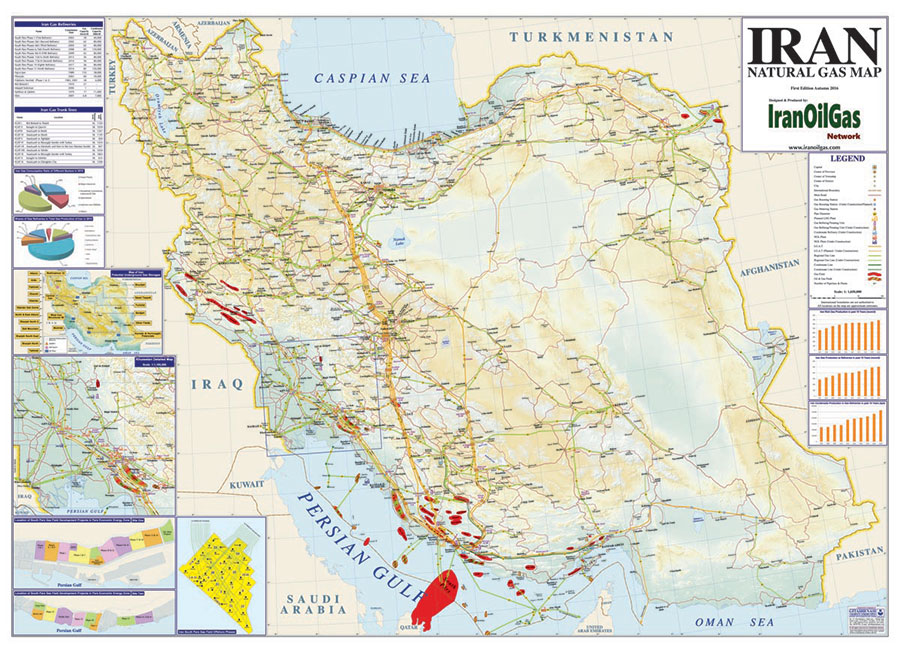
What if US sanctions reduce Iranian exports close to zero?
Most analysts expected the reduction in Iranian exports to be gradual
and limited, including Poten & Partners, author of this report.
It was thought the reduction could eventually reach 500-600,000 barrels
per day from an average of 2.6 mill barrels per day in 2018
year-to-date.
However, an alternative scenario has been gaining traction, one in
which Iranian exports will be reduced even more than during the previous
sanctions period.
Reports from the US State Department indicate that the Trump
administration is not only looking for reductions in exports, similar to
those imposed during the Obama administration but also aims to bring
Iranian exports down to zero.
While this may not be a realistic expectation, the US is expected to
use its considerable leverage to force rolling reductions in purchases
from all buyers of Iranian crude and waivers are conditional on
immediate cuts.
The implications of further Iranian export cuts for the tanker market
are uncertain; it depends to a large extent on which countries have the
spare production capacity to make up the shortfall.
The ultimate impact on tanker tonne/mile demand hinges on the resulting changes in trade flows.
Iran has ample experience in dealing with various kinds of sanctions
and even if the US applies maximum pressure on its trading partners,
Iran will have various options to keep at least some of its exports
flowing.
For example, as sanctions start to bite, it will try to lure buyers
with discounts and extended payment terms. To circumvent US banking
restrictions, it could accept payment in other currencies or do barter
deals and has already agreed to an oil swap with Iraq.
Iran will also be using its own tanker fleet (one of the largest in the world) to move and store crude.
However, despite Iran’s attempts to minimise the damage, early
indications are not encouraging for the country. Most international oil
companies, especially those with meaningful US operations, have already
decided to steer clear from buying Iranian crude.
US allies like Japan and South Korea are under pressure to reduce their
purchases. Indeed, South Korea has already dropped imports to zero.
Turkey is also a significant buyer of Iranian oil and while they may
resist pressure from the US to cut back, they don’t have a lot of room
to increase their purchases.
The two countries that could take more Iranian crude are the two
largest current buyers - India and China. Combined they imported about
1.4 mill barrels per day over the past three months. India is more
likely than China to reduce its imports from Iran under US pressure.
China, which is already embroiled in a trade conflict with the US has
less incentive to comply and may import more (discounted) Iranian crude.
So, what happens if US sanctions are so successful that Iranian exports
are reduced from 2.6 mill to 1 mill barrels per day by the end of this
year?
Unfortunately, the Iranian sanctions are not happening in a vacuum.
Venezuela’s production is also falling. The IEA estimates that
Venezuela’s production capacity will fall a further 550,000 to around
800,000 barrels per day by the end of 2019.
Angola is also facing challenges maintaining production. In the
short-term Libya and Canada are facing production and export hiccups. In
our own backyard, the shale oil producers in Texas have problems
bringing their growing crude oil flows to market due to pipeline
restrictions and port constraints.
Where will the replacement crude oil come from?
The only OPEC countries with significant spare capacity are Saudi Arabia, the UAE and Kuwait.
Industry experts believe that these countries can sustainably increase
production by 1.5 –2 mill barrels per day within 12 months; outside
OPEC, Russian producers can reverse their voluntary cutbacks, which will
add back 300,000 barrels per day.
The bottom-line is: it will be ‘all hands on deck’ for the producers
with spare capacity, and in such a scenario, there is a risk of
significant price increases.
Higher prices will throttle demand growth, in particular in developing
countries, which are already facing headwinds with higher oil prices in
combination with a strong dollar.
A slowdown in global oil demand will also have a negative impact on tanker demand, Poten concluded.
No comments:
Post a Comment